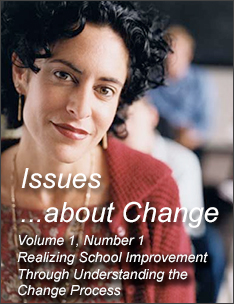Outcomes of Professional Learning Communities for Staff and Students
What difference does it make if staff are communally organized? What results, if any, might be gained from this kind of arrangement? An abbreviated report of staff and student outcomes in schools where staff are engaged together in professional learning communities follows. This report comes from the summary of results included in the literature review noted above (Hord, 1997, p. 27).
For staff, the following results have been observed:
- reduction of isolation of teachers
- increased commitment to the mission and goals of the school and increased vigor in working to strengthen the mission
- shared responsibility for the total development of students and collective responsibility for students' success
- powerful learning that defines good teaching and classroom practice and that creates new knowledge and beliefs about teaching and learners
- increased meaning and understanding of the content that teachers teach and the roles they play in helping all students achieve expectations
- higher likelihood that teachers will be well informed, professionally renewed, and inspired to inspire students
- more satisfaction, higher morale, and lower rates of absenteeism
- significant advances in adapting teaching to the students, accomplished more quickly than in traditional schools
- commitment to making significant and lasting changes and
- higher likelihood of undertaking fundamental systemic change (p. 27).
For students, the results include:
- decreased dropout rate and fewer classes "skipped"
- lower rates of absenteeism
- increased learning that is distributed more equitably in the smaller high schools
- greater academic gains in math, science, history, and reading than in traditional schools and
- smaller achievement gaps between students from different backgrounds (p. 28).
For more information about these important professional learning community outcomes, please refer to the literature review (Hord, 1997).
Next Page: In Conclusion

